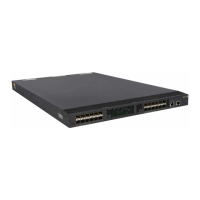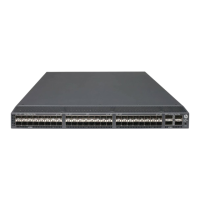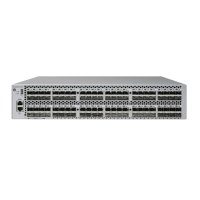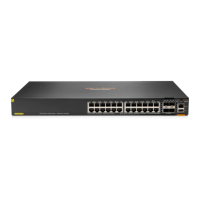66
If the server returns a DHCP-ACK message or does not return any message within an interval,
the DHCP relay agent performs the following operations:
Removes the relay entry.
Sends a DHCP-RELEASE message to the DHCP server to release the IP address.
If the server returns a DHCP-NAK message, the relay agent keeps the entry.
With this feature disabled, the DHCP relay agent does not remove relay entries automatically. After a
DHCP client releases its IP address, you must use the reset dhcp relay client-information on the
relay agent to remove the corresponding relay entry.
Examples
# Disable periodic refresh of relay entries.
<Sysname> system-view
[Sysname] undo dhcp relay client-information refresh enable
Related commands
dhcp relay client-information record
dhcp relay client-information refresh
reset dhcp relay client-information
dhcp relay information circuit-id
Use dhcp relay information circuit-id to configure the padding mode and padding format for the
Circuit ID sub-option of Option 82.
Use undo dhcp relay information circuit-id to restore the default.
Syntax
dhcp relay information circuit-id { string circuit-id | { normal | verbose [ node-identifier { mac |
sysname | user-defined node-identifier } ] } [ format { ascii | hex } ] }
undo dhcp relay information circuit-id
Default
The padding mode is normal and the padding format is hex.
Views
Interface view
Predefined user roles
network-admin
Parameters
string circuit-id: Specifies the string mode that uses a case-sensitive string of 3 to 63 characters as
the content of the Circuit ID sub-option.
normal: Specifies the normal mode, in which the padding content consists of the VLAN ID and port
number.
verbose: Specifies the verbose mode. The padding content includes the VLAN ID and interface
number.
node-identifier { mac | sysname | user-defined node-identifier }: Specifies the access node
identifier. The padding content includes the node identifier, Ethernet type (fixed to eth), interface
number, and VLAN ID. The node identifier varies by keyword mac, sysname, and user-defined.
mac: Uses the MAC address of the access node as the node identifier. It is the default node
identifier.

